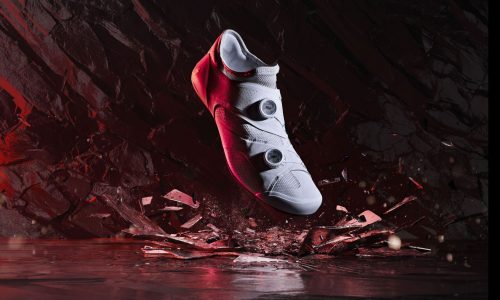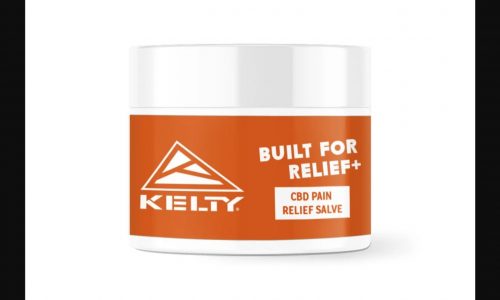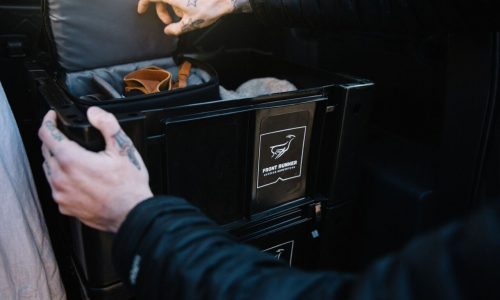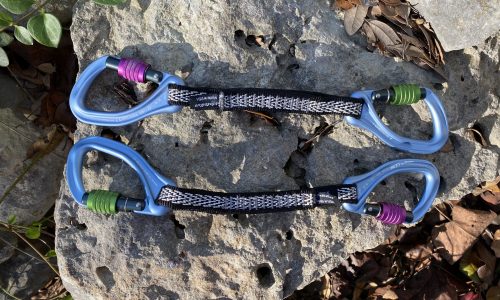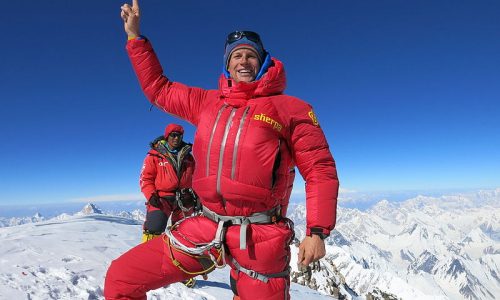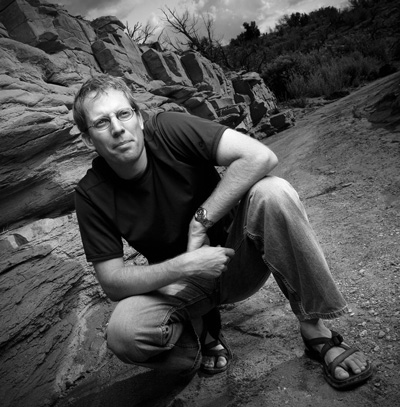
Adventure Photographer Michael Clark
For the past eighteen years, Michael Clark has specialized in adventure sports photography. He started out as a climbing photographer and initially shot only rock climbing, ice climbing and mountaineering. As his work evolved, he expanded into most all of the other adventure sports and also made huge strides with portraiture and lifestyle imagery. His clients include a wide range of editorial and commercial clients including Apple, Adobe, Nikon, Red Bull, Patagonia, Outside, Climbing Magazine, Backpacker Magazine and many others. Gear Institute sat down with him to talk about his essential equipment, and the joy of making a living outdoors.
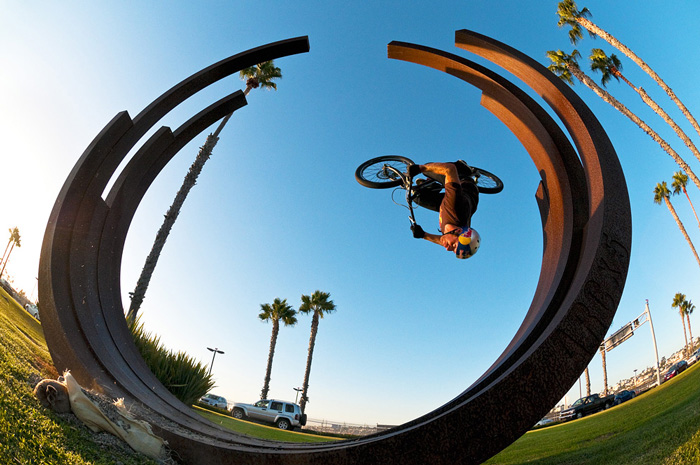
Photo: Michael Clark
Michael, you’ve been shooting photographs professionally for almost 20 years now, what are some of the assignments, adventures and images you’ve collected that stand out?
It has been an amazing ride so far. I have had so many crazy and scary adventures in the far corners of the globe that it is hard to even remember all of them. If I had to pull out just a few though, I’d have to say shooting “deep water soloing” (a.k.a psicobloc) with Chris Sharma in Mallorca, covering the Patagonian Expedition Race for three years in southern Chile and shooting 60-foot waves at the 2009/2010 Eddie Aikau. There have been many other memorable assignments and images though, including pretty much every Red Bull assignment I have ever shot. Shooting big-wave surfing in Tahiti a few years ago wasn’t too horrible either. My most recent book, Exposed: Inside the Life and Images of a Pro Photographer (PeachPit Press), relays many of the adventures and misadventures I have had so far.
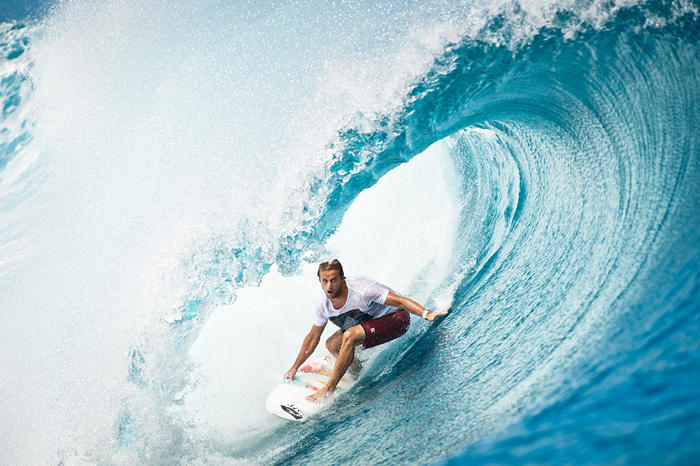
Photo: Michael Clark
Because I am a participant in many of the sports I photograph, safety for myself, and the athletes I am working with, is always a major concern. I have fallen into quicksand, been hit by falling rocks the size of beach balls, and I’ve had my rope cut down to only a few strands of the core while hanging from it shooting rock climbing. I’ve also frost-nipped my fingers and toes while shooting ice climbing, become hypothermic while shooting sea kayaking (in the icy waters of the Beagle Channel), and nearly had my head split open by an errant surfboard fin. My work is as much about getting into position as it is about getting the image. On some shoots a little agony is just the price of admission. Getting the image is a matter of ignoring those niggling details and getting on with the job.
How about for your personal travel highlights—what places would you go back to in a moment and why? And what’s still left on your must-see list?
There are tons of places I would love to go back to and do go back to often. I have a soft spot in my heart for France. It is an amazing country. The food and the climbing in France are beyond compare. I have spent years in France and feel at home there. The Alps are some of the most amazing mountains anywhere. There is so much variety of culture, food, sport and living options that I find it hard to resist.
Patagonia is another one of those places that is near and dear to me—it is wild and remote and harsh like few places on Earth. While covering the Patagonia Expedition Race in remote Chile I fell in love with the wildness of that landscape. There are few like it. When you are out in the middle of nowhere you know that Mother Nature could squash you like a bug at any moment and you feel like you are back in the 1800s, completely out there on your own.
With all of your camera equipment, I imagine you have a tight inventory of other gear you can pack. What makes it into your ‘essentials’ kit?
Aside from the mountain of photo and video gear that often goes with me on each assignment, I suppose my essentials are not much different than anyone else. I have the “standard” electronics: iPhone, headphones, laptop, extra batteries, etc. I try to keep the extras to a minimum because I have so much other gear to cart around. I also have a small first aid kit that goes with me when I travel—it has very basic stuff in it like ibuprofen, allergy meds, sunscreen and whatnot.
I also like having a good pair of lightweight hiking or approach shoes. These days I have found the Ecco BIOM Ultras to be my go to shoe. They are super lightweight and fit my hard to fit feet incredibly well. I pulled them out of the box and hiked more than 60 miles on the John Muir Trail without any issues whatsoever.
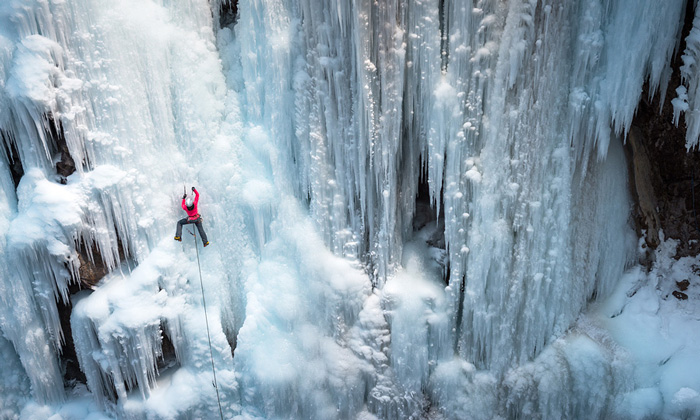
Photo: Michael Clark
How about for ‘all-time’ gear? What are some of the best products you’ve owned during your outdoor life?
Oh, this is a tough one as I am a total gear head and have enough outdoor gear for just about any adventure. There are many products that I have used and abused. I find my favorites are simple, innovative designs. My top five here:
1) I have been using Western Mountaineering sleeping bags for about 20 years and believe they are better than any other brand out there. I have had three of their bags over the years and they have all been gorgeous, warm and durable.
2) In terms of tents, I have gone through a lot of tents and the Black Diamond HiLight tent has to be one of the best I have ever used. I have had it in sideways rain for two weeks, in crazy windy storms, in deep snow and it does it all. Plus, it is so easy to set up and such a simple design there is little that can go wrong.
3) As an ice climber, I think my Black Diamond Cobra ice tools are a thing of beauty. These belong in a design museum (and I think they are). Luckily, they work just as well as they look. I drool over my ice tools.
4) On the pack front, the Arc’teryx Arrakis 50 has been my favorite pack for a while now. It isn’t super light, but it is waterproof and incredibly durable. I have lots of packs and have had lots of packs, many of which are super lightweight, but the Arrakis 50 is so comfortable and such a simple, well-designed backpack that all the others pale in comparison. On the Arc’Teryx front, pretty much everything they make is amazing.
5) Lastly, I have an old Patagonia balaclava that I have had for 20 years or more. That thing goes everywhere with me in the winter.
With all of the sports you shoot, which athletes are the most obsessed with gear, and which are the least?
As a climber I thought we were obsessed with gear but we can’t hold a candle to the mountain bikers. Cyclists in general have to be the biggest gear heads anywhere. With climbing, of any sort, you get the gear and you are set for quite some time. You just have to go out and do your sport. With cycling, people are constantly trying to get a lighter more efficient setup, and it is never ending.
In terms of those sports where the athletes seem the least obsessed with gear, I would have to say trail running seems pretty low maintenance. All you need are a good pair of shoes, usually minimalist these days, and some running shorts and you are ready to roll.
Do you have any top traveling photographer tips to share?
In terms of travel tips for photographers, I would say travel as light as you possibly can. Also, when traveling internationally, with a lot of gear, especially if that gear is in Pelican cases, you will need to get a Carnet. A carnet is a document that allows one to temporarily import goods without paying taxes on those goods. It basically lists all of your gear and lets the custom agent know that the gear was purchased in your home country so that when you come back to your own country you don’t have to pay taxes on it. I realize that for most photographers they will never run into this issue, but for working pros who sometimes travel oversees with 12 cases or more, this comes up often.
Other than these basics tips, I would suggest finding an airline that you like and sticking with them so you can build up air miles and get preferred boarding privileges. This helps out when you are on a full flight and need to get your camera gear onto the plane. Also, make sure your camera backpacks and bags will fit into regional jet overhead compartments, which are smaller than the larger overhead compartments on normal planes.
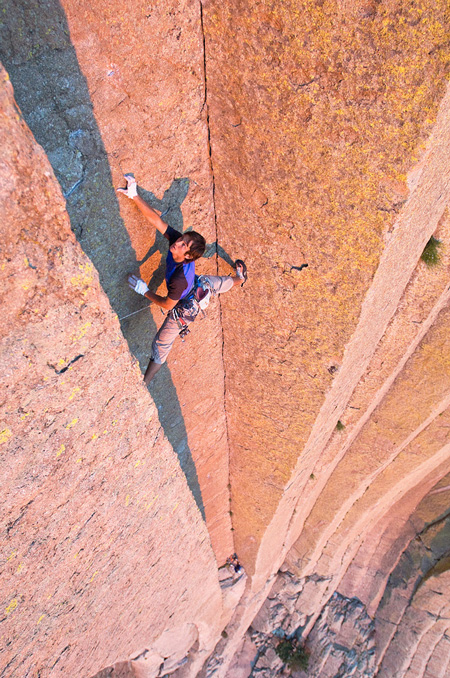
Photo: Michael Clark










